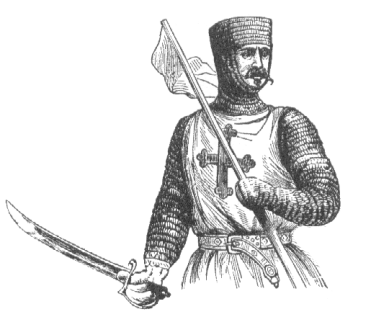

War and Combat 1150-1270: The Evidence from Old French Literature

This is a work seeking a crossover audience. Catherine Hanley believes that although much of Old French literature is devoted to combat and fighting men, few scholars have sufficient background in both literature and military history to fully appreciate what it can tell us about war. Hanley brings together historical and literary scholarship to cast new light on a score of Old French works of the twelfth and thirteenth centuries. As a historian of chivalry and warfare I gained a great deal from her literary analysis; readers coming to the book from other disciplines, or out of amateur interest, will also find much to think about.
Part one consists of two chapters summarizing recent work on "The Reality of War" and "Ideals and Concepts of War." Chapter one discusses tactics, equipment, personnel, castles, horses, and injuries, among other subjects; chapter two theories of the just war and chivalric, ecclesiastical and other norms that affected the waging of war. These introductions are solid, readable, and based on up-to-date scholarship. Specialists may pick at a point here or there – I have my own short list of minor disagreements – but the reader new to medieval military history will be well served by this section. The second part of the book is an extended discussion of war and literature, divided into three chapters, which cover three different genres: chronicles ostensibly describing real events, epics, and romances. The reader who has only a passing acquaintance with Old French literature will come away with a clear notion of the different purposes that shaped the three genres, and how those purposes must be taken into account when interpreting their depiction of warfare.
Hanley argues that, despite the differences between chronicle, epic, and romance, all three were deeply committed to using combat of various sorts – war, tournament, or duels – to develop character, advance plots and make moral or ideological points. All the works examined were written for knights and have little to say about people of other sorts. For instance, knights are customarily named or if unnamed designated by some notable trait, while non-knights are often not named and identified only by function. Indeed, the purpose of all the works examined is to validate knighthood as a way of life, and to stress the privileges and (less often) the duties of the kind of men for whom the poems were written.
Hanley illustrates this focus on knights and knighthood with great thoroughness, but does not neglect to point out that the picture is at odds with the military realities of the age. Real war involved many combatants who were not knights, and the use of techniques – such as archery and siege weaponry – that were not associated with knights; today’s historians do not accept the idea that the Central Middle Ages was exclusively an age of noble cavalrymen. Hanley’s book shows, however, how such a notion could become fixed in the public and scholarly mind. Whatever the real usefulness of armored horsemen in war, there was a socially dominant group of knightly literary patrons and an influential audience of knights to be pleased by poets who showed warfare as essentially the province of men like them: men who rode; men who used specific weapons; men whose strength and skill was beyond the ordinary; men whose individual heroism, they believed, made all the difference in war.
One of the key themes of this corpus of Old French literature, in Hanley’s analysis, is the constant re-iteration of the doctrine that legitimate violence belonged to knights alone. This is illustrated in many incidents which show that those who tried to usurp the privilege of knights were to be harshly and rightly punished. Civilians (if that term can be used), the poets show us, might be justified in fighting to protect their homes; once they stepped out of that role, however, they were subject to being mocked, beaten, or killed without consideration. Women, too, could defend their homes, but should not dare to take up arms – that would be a reprehensible folly that was inevitably chastised. I was struck that such a point even had to be made, but evidently more than one writer felt the necessity to emphasize the uniqueness of knights in this way.
Hanley’s discussion of the meaning of "chivalry" reflects the tendency in recent scholarship to see it as a standard of behavior that applied almost always, if not quite exclusively, to relationships between fellow knights. Hanley provides ammunition for this argument by showing how self-regarding were the knights depicted in the literature, and presumably the knights who provided the audience for it. Hanley contends that even the romances, which clearly seek to civilize chivalry, or at least make it more courtly, are not really very interested in women or in love. The poets speak as men to other men, and the goal of the romance knight is not love, but self-validation, won among other knights. Love may follow on such self-validation, but "it is consequent on knightly prowess" (224) rather than producing that prowess. Romance poets seem to want a better chivalry, but they still address and cater to knightly concerns about the value of knighthood, which is proved by how the knight conducts himself in war.
Hanley’s book is well written, well organized, and based on extensive reading. Her consideration for her readers is evident throughout the book, and is nicely illustrated by the handy chart placed at the front of the book, which shows the chronological relationship between the Old French texts and historical events of the twelfth and thirteenth century. I have no doubts that War and Combat will find itself into many scholarly libraries, and will serve many readers as a guide to the complexities of the medieval literature of war.
